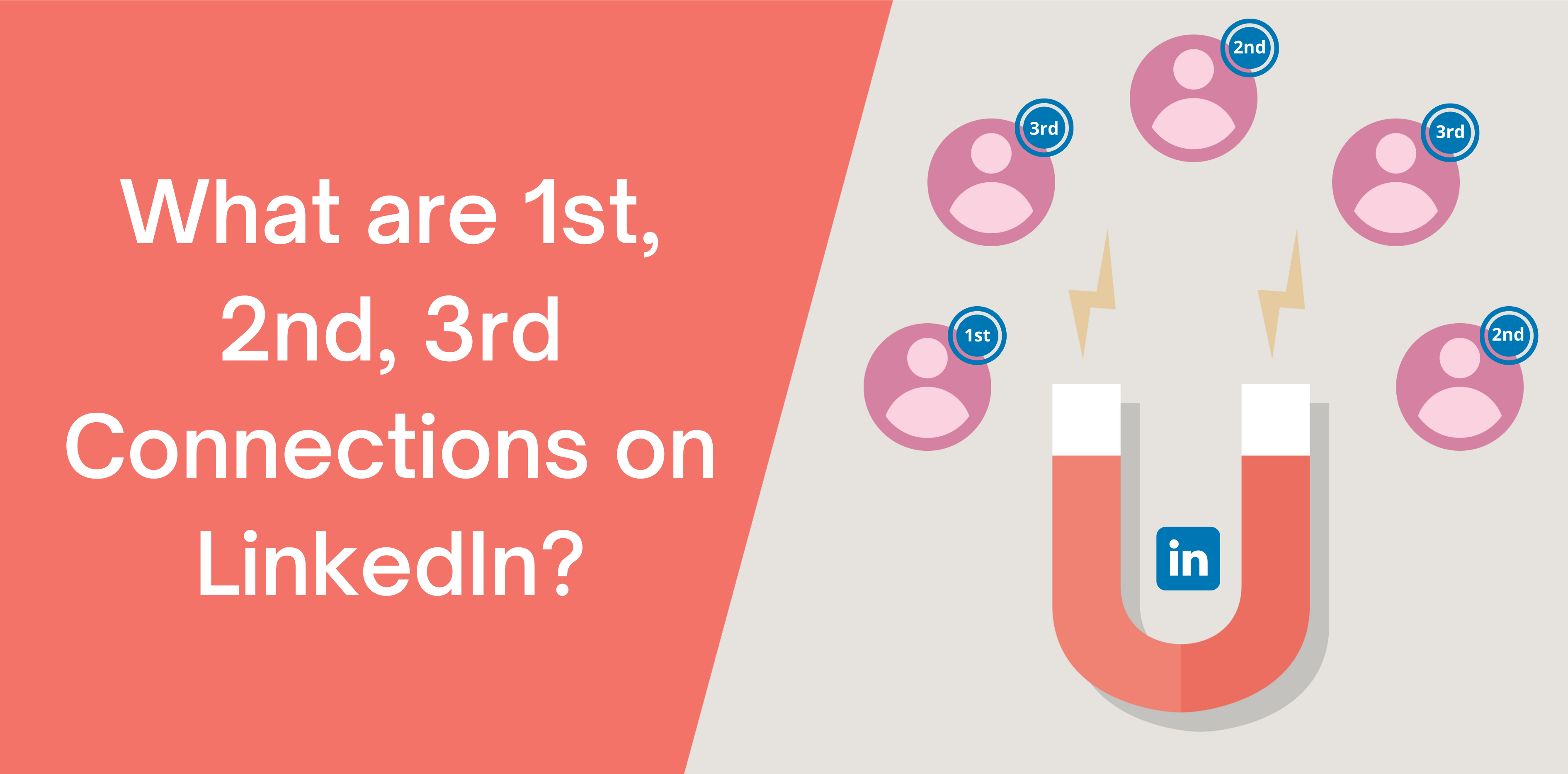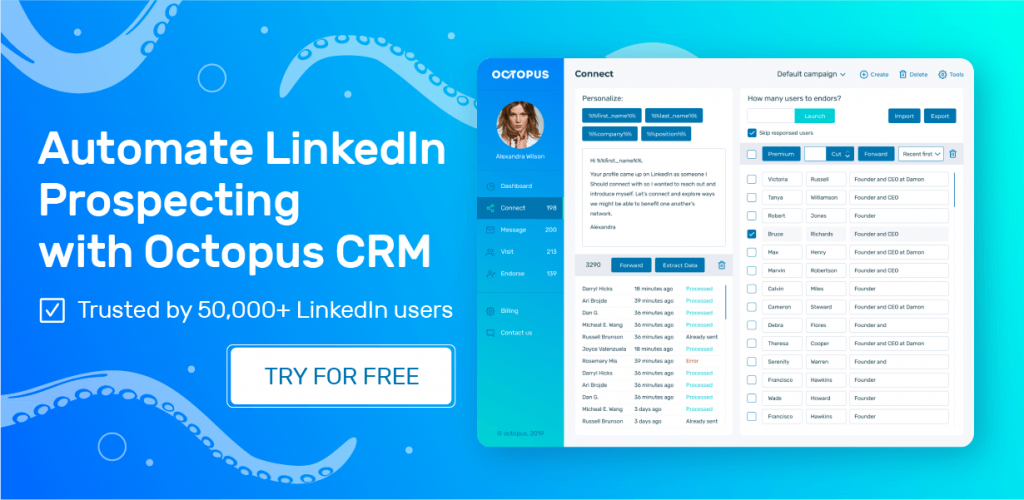LinkedIn is a business-oriented social media network professionals use to create a robust network. This guide will help you learn.
1st-Degree on LinkedIn
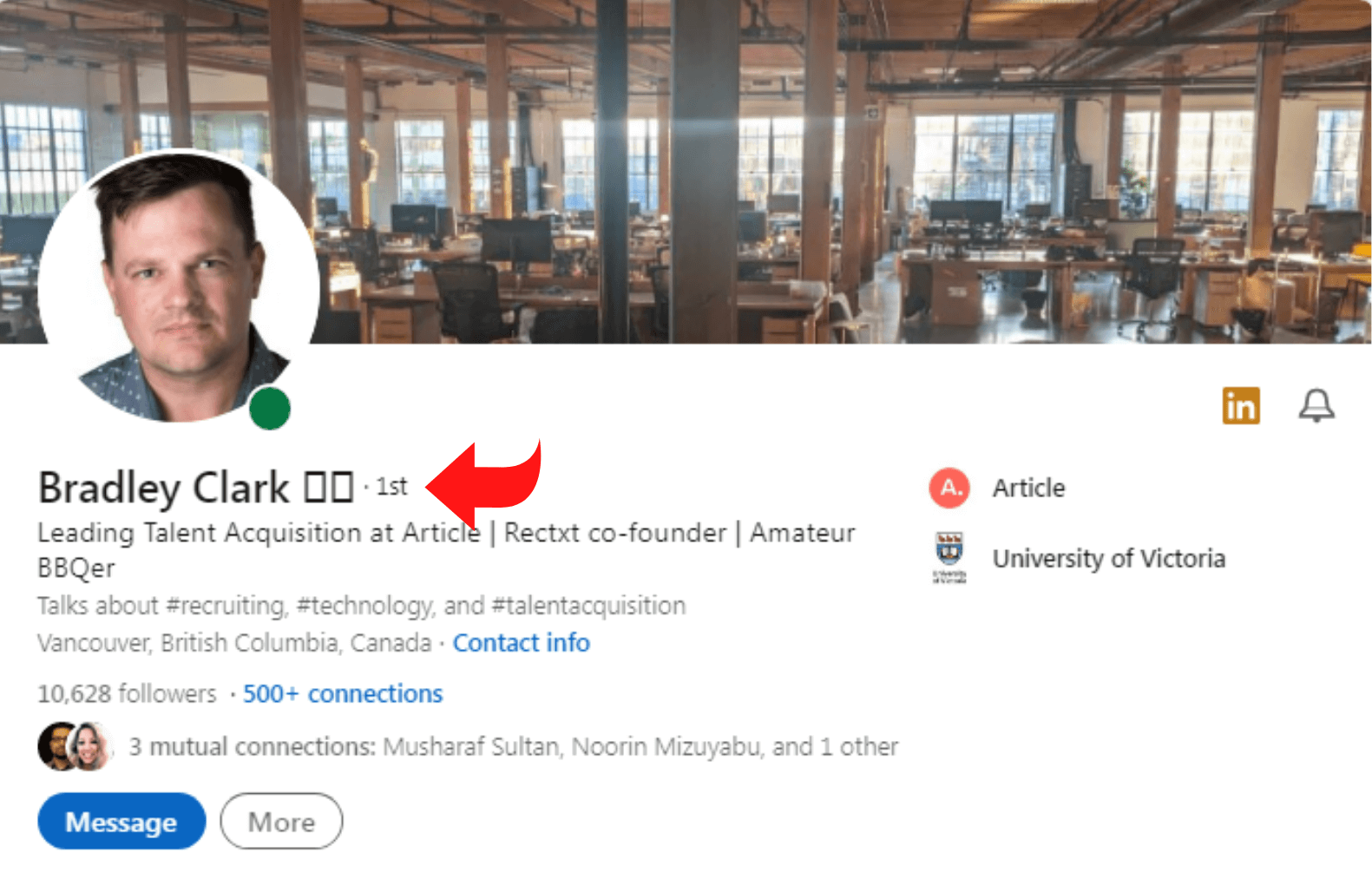
The LinkedIn users you directly connect with are your 1st-degree connections. You may have sent this LinkedIn user a connection request or accepted their invitation.
Related articles: Best LinkedIn Invite Message to Build Your Network Fast
How to Write a Perfect LinkedIn Connection Request Message
You’ll notice a ‘1st-degree’ icon next to your 1st-degree LinkedIn connections indicating you’re part of each other’s network. LinkedIn lets you contact your 1st-degree connections directly by sending them a message.
2nd-Degree on LinkedIn
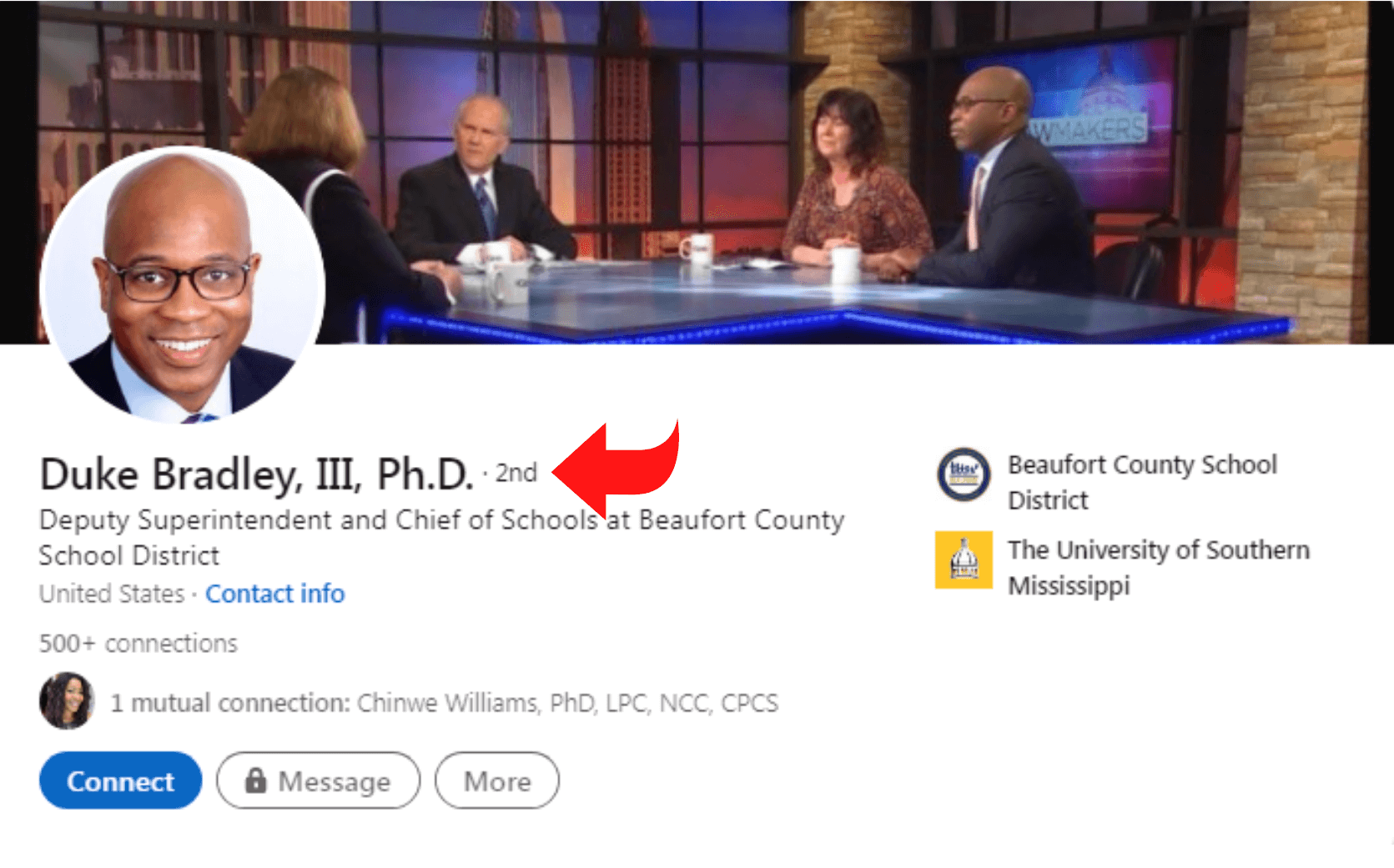
Your 2nd-degree connections do not belong to your network. They are “friends of friends” and connected to your 1st-degree relationships.
You’ll notice a 2nd-degree icon if you search their name or visit their profile. You may send them an InMail or introduction if you have a LinkedIn premium account. Otherwise, you cannot contact your 2nd-degree links.
3rd-Degree on LinkedIn
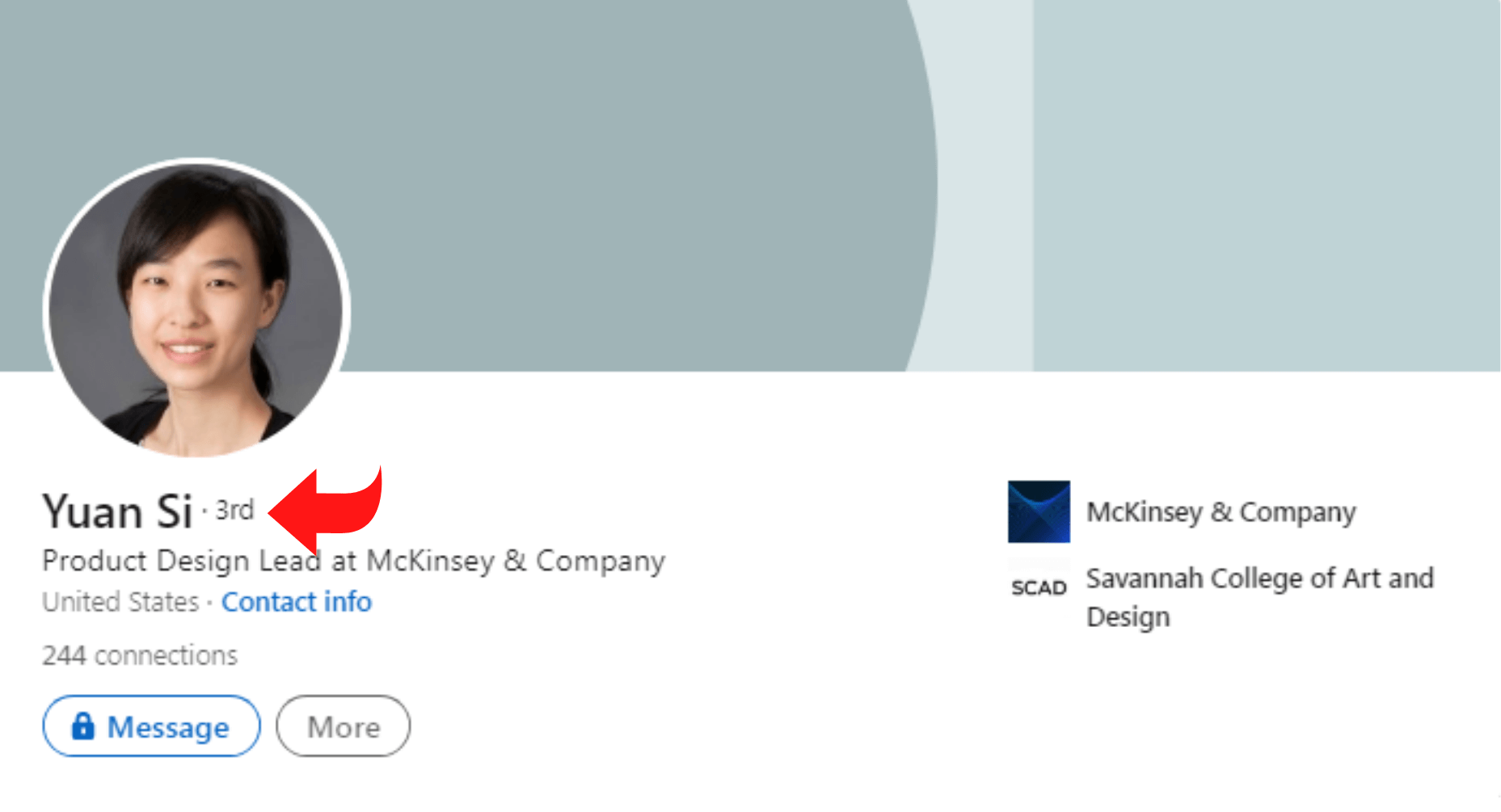
3rd-degree connections are also not part of your network. These LinkedIn users are people connected to your 2nd-degree connections.
You’ll see a 3rd-degree or + icon next to their name on their profile’s search bar. LinkedIn does not allow you to message your 3rd-degree connections, but you can send them an InMail.
Out of Network on LinkedIn
Some LinkedIn users do not follow within the above-mentioned degrees of connections. Out of network members are those who do not belong to your 1st, 2nd, and 3rd LinkedIn connections.
Although you cannot send them a message, you can connect with them via InMail.
Related articles: Ways To Leverage LinkedIn InMail More Effectively
How to Get Unlimited LinkedIn InMails
Followers
Followers are LinkedIn users that select the option to follow your public updates and latest posts. You can tweak your follower settings by visiting the ‘Settings’ page.
Fellow Members of Your LinkedIn Groups
Fellow members of your LinkedIn groups are users that belong to your network because you’re in a similar group.
You can check a LinkedIn user’s ‘Highlights’ section to identify which groups you have in common. LinkedIn lets you connect with fellow group members by sending a message or through the group.
How to Reach All 1st-Degree Connections on LinkedIn
Let’s discuss the different ways you can reach out to your 1st-degree connections:
Posts
LinkedIn’s algorithm controls the ranking of your post, meaning its distribution is limited. Thus, LinkedIn posts are the lowest solutions to reach your 1st-degree connections. But it’s also an excellent way of engaging them and establishing brand authority.
Messages
Sending personalized messages to your 1st-degree connections is an excellent way of fostering deep relationships – it’s also time-consuming. We recommend you use Octopus CRM LinkedIn automation to reach your connections fast, save time, and engage more users.
Notifications
The best way of reaching your 1st-degree connections is by using the notifications button. If you change your job, birthday, or any other special event, LinkedIn will notify your network.
It also means you’ll receive notifications about their special events. Sending a meaningful text congratulating a LinkedIn user can be a fantastic way of growing an organic relationship.
Use Paid Campaigns
Running a paid campaign includes finding the email addresses of your LinkedIn users into a CSV file and uploading it to LinkedIn’s campaign center as your target audience.
After creating your target audience, LinkedIn enables you to connect with other users in the following three ways:
- Sponsored Content
- Sponsored Message
- Text Ads
How to Build Your LinkedIn 1st-Degree Connection Prospecting Process
Here are a few ways you can improve your LinkedIn 1st-degree connection prospecting process:
Send Warm Introductions
Being a social seller is learning the best ways to send warmer introductions to prospects. So, how do you achieve that on LinkedIn?
You can achieve this by tapping into your network and asking colleagues to introduce you to potential clients.
Prospect for Talent
Go through your 1st-degree connection list to identify talent within your industry. Prospecting for talent goes beyond the traditional job opening conversation.
It focuses on having meaningful conversations with talented people to build relationships. So, even if they are not looking for a move, you can recruit proactively when they are available.
How to Reach All 2nd-Degree Connections on LinkedIn
Reaching your 2nd-degree connections on LinkedIn can be challenging since you can’t send them a message.
Here are several ways you can contact your 2nd-degree connections on LinkedIn:
- Send them an InMail
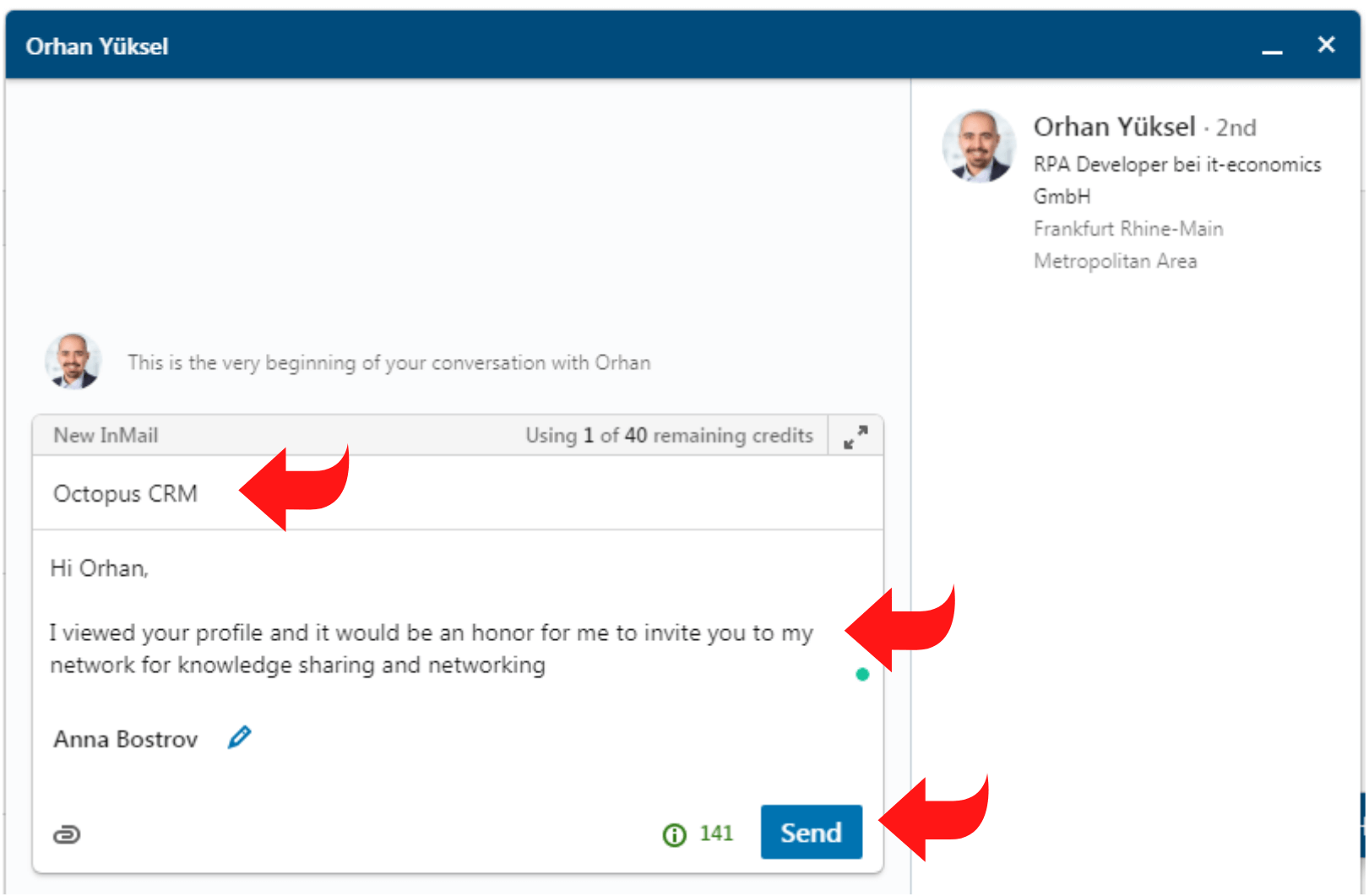
- Send your LinkedIn connection a message by contacting them through a similar LinkedIn group
- You can pinpoint their email address by visiting their profile
How to Build Your 2nd-Degree Connection Prospecting Process
Here’s how you can build your 2nd-degree connection prospecting process:
- Build a solid LinkedIn network
- Leverage the demographics of your target audience
- Establish a process to follow up on your Introduction requests
Should You Reach Directly 3rd-Degree Connections
If you want to connect with a 3rd-degree connection, it’s wise to choose one of the following options:
- Send them a personalized InMail
- Contact them through their mobile number or email while referencing their LinkedIn profile
Tips on How to Expand Your LinkedIn Network
Here are tips you can follow to expand your existing LinkedIn network:
- Personalize your connection requests to grab the user’s attention
- Follow up on in-person networking opportunities foster deep relationships
- Invite engagements by posting informative yet exciting content
- Explore LinkedIn groups to connect with like-minded people
- Engage with your existing connections with meaningful comments
- Post eye-catching visual content to increase the aesthetic of your LinkedIn profile
Conclusion
Growing your LinkedIn network can be tricky. But it doesn’t have to be! Before engaging, ensure you are purposeful, targeted, and offer high value. Include you have a tangible reason to connect. Remember to personalize your connection requests and post often to grab the attention of other LinkedIn users and expand your network.
